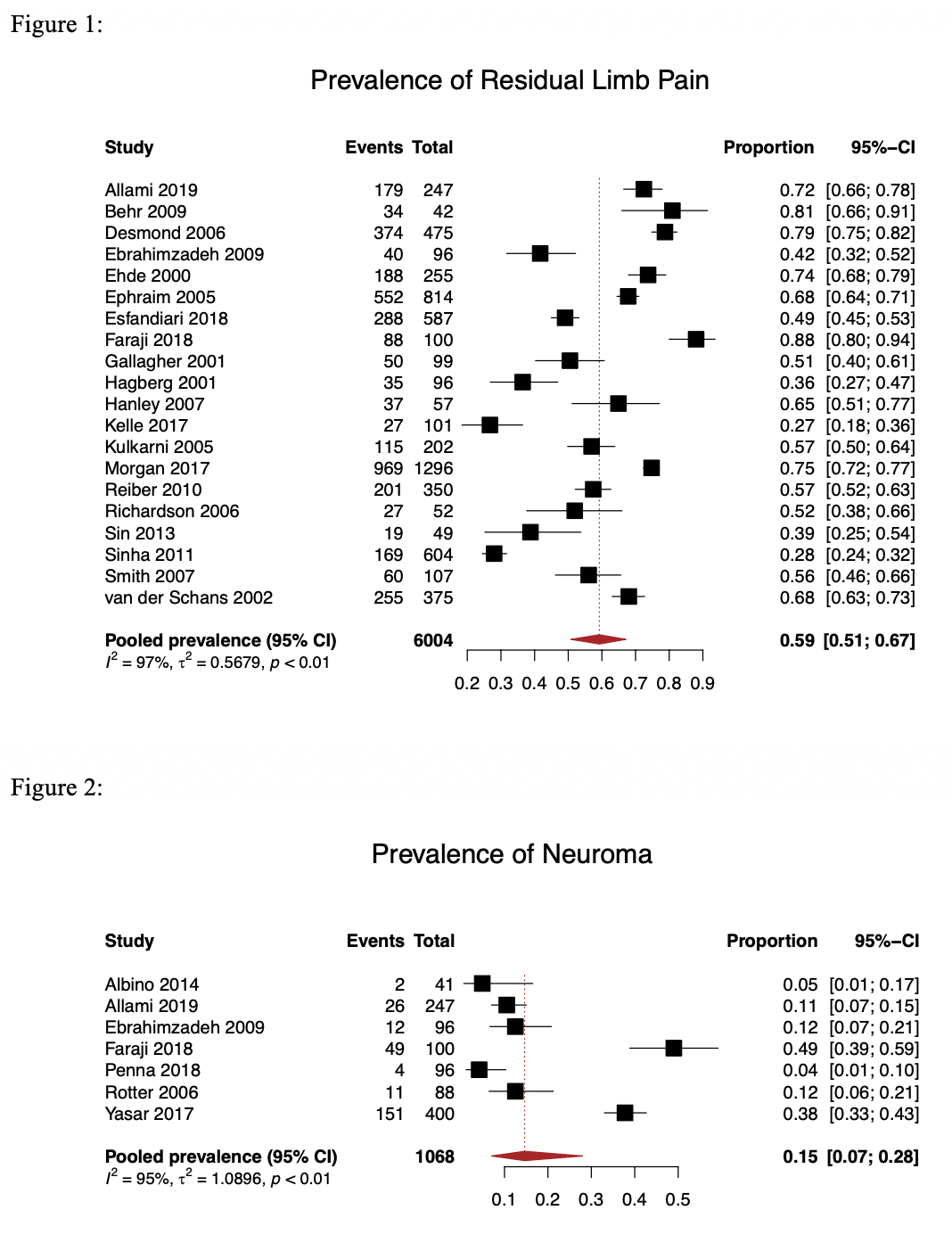Prevalence Of Residual Limb Pain And Symptomatic Neuroma Pain Following Lower Extremity Amputation: A Systematic Review And Meta-analysis.
Emile B. List, BSc, David D. Krijgh, M.D., Enrico Martin, M.D. and J. Henk Coert, M.D. Ph.D., University Medical Center Utrecht, Utrecht, Netherlands
Introduction:
Residual Limb Pain (RLP) is associated with (partial) extremity amputations and can be defined as a painful sensation or feeling emanating from the remaining part of the limb. RLP has multiple etiologies and is used as a collective term for all underlying somatic and neuropathic causes. A common cause of RLP is neuroma formation after nerve transections associated with amputation. Neuromas can be asymptomatic but can develop into very painful and severely debilitating pathologies, preventing prosthetic use, reducing quality of life and requiring medication. However, RLP and symptomatic neuromas are often not properly recognized by many physicians explaining the varying prevalence in literature. The aim of this systematic review and meta-analysis is to provide a comprehensive overview of published literature about the prevalence of RLP and symptomatic neuroma pain following lower extremity amputation.
Methods:
Studies reporting the prevalence of RLP and symptomatic neuroma pain in patients who have had a lower extremity amputation published between 2000 and 2020, were identified in PubMed and Embase. Random-effects meta-analyses of proportions were performed to quantify the prevalence of RLP and symptomatic neuroma. Subgroups were identified and analyzed.
Results:
24 articles were selected for this meta-analysis including data of 6716 patients in 13 different countries: 17 studies reported RLP prevalence, 4 studies reported symptomatic neuromas prevalence, and 3 studies reported both. For RLP, the pooled prevalence was 59% (95% CI: 51-67) (Figure 1). For symptomatic neuromas, the pooled prevalence was 15% (95% CI: 7-28) (Figure 2). RLP subgroup analysis showed a statistically significant higher RLP prevalence in studies with a mean age >50, studies performed in the United States compared to Europe or Asia, studies that used self-administered questionnaires as their data collection method compared to face-to-face or phone interviews, and studies with a mean follow-up >2 years.
Conclusions:
The prevalence of RLP and symptomatic neuroma in patients who have had a lower extremity amputation is 59% and 15%, respectively. A higher prevalence of RLP was identified in patients aged >50 years, with geographic location within the United States, follow up >2 years, and in studies using a self-administered questionnaire for data collection.

Back to 2021 ePosters
